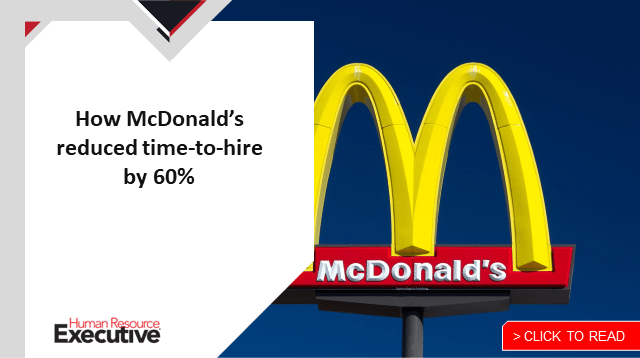Is virtual reality and other digital-based training worth it? That’s the question Mike Wynn, senior vice president and innovations design manager at The Academy at Bank of America, set out to answer in his mega-session on Wednesday. His answer is yes, of course, but that doesn’t mean these technologies should replace classroom training or other more traditional employee learning models.
Instead, Wynn advised HR leaders to consider the scale, power and high content retention rates that digital technologies can deliver, despite the challenges of cost and deployment. Bank of America has created 900 simulations for its systems simulator (ACES), its conversations simulator (iCoach) and its VR program in the past few years, he said. And its employees are on pace to complete 700,000 practice sessions this year.
“Now, I want you to think about that number for a second: 700,000 practice sessions completed by learners,” Wynn said. “What do you think it would take to do that with traditional training? How much time, how much money would you have to spend to get to 700,000 practice sessions?”
Virtual reality, in particular, is engaging employees, which boosts learning success and overall employee experience as employers struggle to retain workers in today’s tight labor market.
“When it comes to VR, here’s what I am hearing from people: excitement, energy,” he said. “They are talking to their family members at dinner about what they did at work. Now, I don’t know about you guys, but typically talk at the dinner table doesn’t include web-based training job aids.”
Data shows that this more active learning also increases learners’ content retention to nearly 90%, he said, a huge jump from the typical 10% retention rate that comes from reading.
 Consider training for bank robberies. Previously, employees watched a video and read some bullet points, Wynn said. With VR, trainees encounter a situation that closely resembles an actual bank robbery, they feel the emotions and must make quick decisions.
Consider training for bank robberies. Previously, employees watched a video and read some bullet points, Wynn said. With VR, trainees encounter a situation that closely resembles an actual bank robbery, they feel the emotions and must make quick decisions.
“When you have a weapon in front of you in VR, it kind of, sort of feels like it’s happening,” he said. “We want your heart rate to get a little bit elevated. We want you to feel that anxiety because I don’t want that first feeling to be when it happens for real.”
Ultimately, “I want you to make a mistake in VR before you make it in real life,” Wynn said.
What Coca-Cola, Blum learned from Viva
What were some of the most surprising insights The Coca-Cola Company and Austria-based furniture manufacturer gained from Microsoft Viva? The soft drink bottler was looking for insights into burnout and wellbeing and found that its best managers spent more time managing their team members one-on-one or in small groups rather than in large meetings, said Kristin McDonald, CHRO of The Coca-Cola Company as a panelist in a breakout session titled The Innovation Powering the New Employee Experience. “We saw in the data the leaders who were disrupting their teams” with pointless meetings, added McDonald.
Meanwhile, Blum was a Microsoft client who eventually upgraded to Viva to improve employee engagement and share company news and updates, according to Elisabeth Rue, Blum’s project manager for IT/HR and a fellow panelist. “We needed a quick solution for reaching employees and stop using only notice boards in our factories,” she said. “We wanted to extend our use of the Microsoft platform to all employees and luckily they had a new idea with Viva.”
HR tech editor Phil Albinus contributed to this report.
The post HR Tech Quick Hits: How VR is boosting learning at Bank of America appeared first on HR Executive.